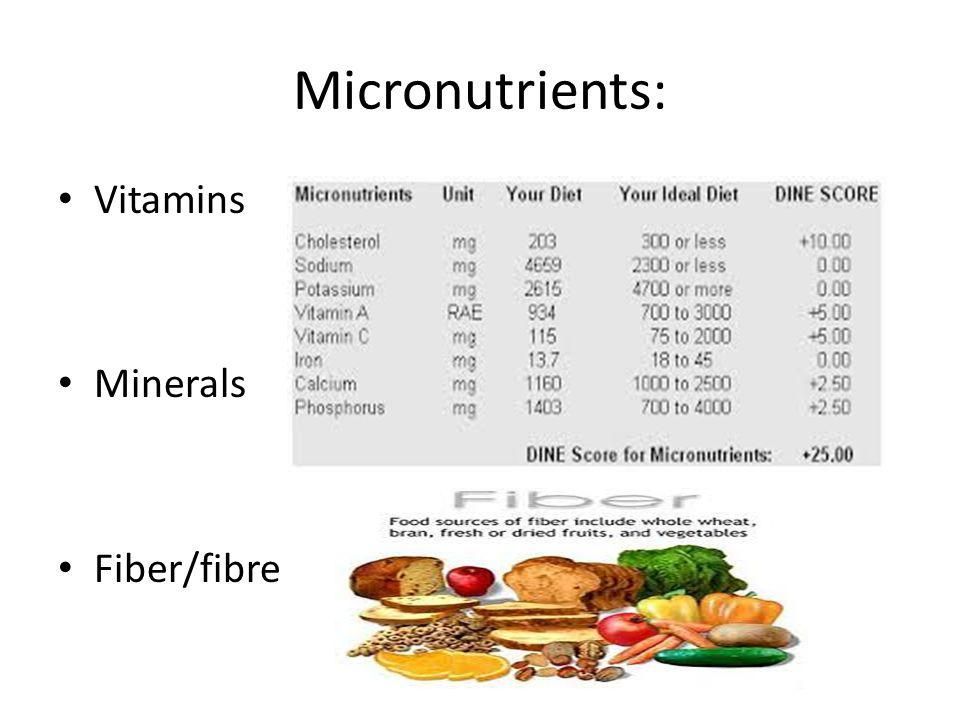Understanding Macros and Micros in Nutrition
When it comes to nutrition, it’s essential to understand the concept of macros and micros. These terms refer to macronutrients and micronutrients, which are vital for maintaining a healthy diet and overall well-being. By having a clear understanding of macros and micros, you can make more informed choices about the foods you consume and ensure your body receives the essential nutrients it needs.
Macronutrients
Macronutrients are nutrients that our bodies require in larger quantities to provide energy, promote growth, and support various bodily functions. There are three primary macronutrients:
1. Carbohydrates
Carbohydrates are the body’s main source of energy. They are found in various foods such as grains, fruits, vegetables, and dairy products. Carbs can be further categorized into simple and complex carbohydrates.
Simple carbohydrates: These are easily digested and provide a quick burst of energy. Examples include table sugar, honey, and processed foods. While they can provide immediate energy, they are typically low in essential nutrients and can lead to blood sugar spikes and crashes if consumed in excess.
Complex carbohydrates: These are made up of long chains of sugar molecules and are digested more slowly. Complex carbs are found in whole grains, legumes, vegetables, and fruits. They provide a steady release of energy and are nutrient-dense, offering vitamins, minerals, and dietary fiber.
2. Proteins
Proteins are essential for growth, repair, and maintenance of body tissues. They are composed of amino acids, which are the building blocks of proteins. Good sources of protein include meat, fish, eggs, dairy products, legumes, and nuts.
Protein is vital for the formation of enzymes, hormones, and antibodies. It also helps build and repair muscles, supports the immune system, and plays a crucial role in various bodily functions.
3. Fats
Fats are an important source of energy and help absorb vitamins. While often associated with unhealthy eating, fats are necessary for our body to function optimally. There are different types of fats:
Saturated fats: These are primarily found in animal products and some tropical oils. Consuming excessive saturated fats can increase the risk of heart disease and should be consumed in moderation.
Unsaturated fats: These are found in plant-based oils and fatty fish. Unsaturated fats are considered heart-healthy fats and can help reduce bad cholesterol levels when consumed in moderation.
Trans fats: These are artificial fats mainly created through a process called hydrogenation. Trans fats increase bad cholesterol levels and should be avoided as much as possible.
Micronutrients
Micronutrients are vital nutrients that our bodies require in smaller quantities, but they are equally important for overall health. There are two primary types of micronutrients:
1. Vitamins
Vitamins are organic substances that are essential for various bodily functions, growth, and development. They help regulate metabolism, support the immune system, and promote overall well-being. Vitamins are found in a wide range of foods, including fruits, vegetables, nuts, grains, and dairy products.
Water-soluble vitamins: These vitamins include vitamin C and the B-complex vitamins (B1, B2, B3, B5, B6, B7, B9, and B12). They are easily absorbed in the body but are not stored for long. It’s important to consume them regularly through a well-balanced diet.
Fat-soluble vitamins: These vitamins include vitamins A, D, E, and K. They dissolve in fat and are stored in the body’s fatty tissues. Unlike water-soluble vitamins, excessive intake of fat-soluble vitamins can lead to toxicity. It’s crucial to consume them in appropriate amounts.
2. Minerals
Minerals are inorganic substances that play vital roles in numerous body functions, such as building strong bones, generating energy, and maintaining proper nerve function. Some essential minerals include calcium, iron, magnesium, potassium, and zinc. They are primarily found in foods such as meat, dairy products, fruits, vegetables, and grains.
The Importance of Balancing Macros and Micros
To achieve optimal nutrition, it’s crucial to maintain a balance between macronutrients and micronutrients. Both macros and micros are necessary for overall health and should be consumed in appropriate proportions.
A diet that is rich in a variety of fruits, vegetables, whole grains, lean proteins, and healthy fats can help ensure you receive an adequate amount of both macros and micros. It’s important to note that everyone’s nutritional needs may vary based on factors such as age, sex, activity level, and underlying health conditions.
By understanding macros and micros, you can make more informed choices about the foods you consume. Paying attention to your diet’s macronutrient and micronutrient composition can help prevent nutrient deficiencies and promote overall well-being.
Remember, balance is key. Incorporating a wide range of foods and nutrients into your daily diet can help you achieve optimal nutrition and maintain a healthy lifestyle.


